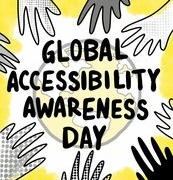What does the European Accessibility Act Mean for Global Publishing?
Our thanks to Laura Brady (House of Anansi) and Tzviya Siegman (John Wiley & Sons) for this article.
The European Accessibility Act
What do publishers around the world need to know about the European Accessibility Act? This legislation is some of the strongest we’ve seen around accessibility and will force change, without question. If publishers plan to sell digital products into the European Union in the near future, they must get up to speed on what this means for their workflows.
So, what is the legislation exactly? The EAA is a directive that aims to improve the functioning of the internal market for accessible products and services, by removing barriers created by divergent rules in Member States.
Businesses will benefit from:
- common rules on accessibility in the EU leading to costs reduction
- easier cross-border trading
- more market opportunities for their accessible products and services
Persons with disabilities and elderly people will benefit from:
- more accessible products and services in the market
- accessible products and services at more competitive prices
- fewer barriers when accessing transport, education and the open labour market
- more jobs available where accessibility expertise is needed
The Directive entered into force in June 2019. Member states have until 28 June 2022 to adopt and publish the laws, regulations and administrative provisions necessary to comply with this Directive. This means introducing new and/or updating existing national legislations to comply with its principles and requirements. The full force of the legislation comes into effect on June 28, 2025.
The legislation follows market-driven standards, requiring publishers to produce their digital publications in an accessible format It also requires the entire supply chain (retailers, e-commerce sites, hardware and software reading solutions, online platforms, DRM solutions, etc.) to make content available to users through accessible services.
The EAA hinges on the discoverability of products and services by end users. Using international standards for accessibility , such as EPUB 3, and describing the accessibility features within the content with schema.org and ONIX metadata enables publishers to expose metadata on retailer and publisher websites, which is crucial.
General Summary
The legislation applies to products and services placed on the market after June 2025
These include:
- Hardware
- Software
- Websites
- Mobile Apps
- ecommerce
- ereaders
- ebooks and dedicated software
- all products and services, including information about how to use above, user sign in, and identity management
There are several factors which allow specific organisations to be exempt from compliance. In addition, the directive does not apply to the following types of content on websites and apps:
- Pre-recorded time-based media published before 28 June 2025.
- Office file format documents published before 25 June 2025.
- Online maps; though if the map is used for navigational purposes then the essential information must be provided in accessible format.
- Third party content that is entirely out of the control of the website or app owner.
- Reproductions of items in heritage collections which are too fragile or expensive to digitise.
- The content of web sites and apps which are considered archival, meaning they are not needed for active administrative purposes and are no longer updated or edited.
- The web sites of schools, kindergartens, and nurseries, except for content pertaining to administrative functions.
Service Providers must prepare necessary information and explain how services meet this act.
All accessibility information must remain private.
In general, this follows the same principles as WCAG’s Perceivable, Operable, Understandable, Robust model, but it points to specific outcomes. The requirements of this legislation incorporate many types of disabilities, including cognitive disabilities, which have only begun to be incorporated into WCAG.
It’s time for publishers to come to terms with what’s required to meet accessibility standards. If the EU is part of your market, it should be a business imperative to investigate how to fix workflows, and implement robust metadata practices.
Information from the EAA Legislation that Pertains to the Publishing Industry
Details from Appendix I in Directive 2019/882
Information and Instructions
Information, instructions for use must be:
- be made available via more than one sensory channel;
- be presented in an understandable way;
- be presented to users in ways they can perceive;
- be presented in fonts of adequate size and suitable shape, taking into account foreseeable conditions of use and using sufficient contrast, as well as adjustable spacing between letters, lines and paragraphs;
- with regard to content, be made available in text formats that can be used for generating alternative assistive formats to be presented in different ways and via more than one sensory channel;
- be accompanied by an alternative presentation of any non-textual content;
- include a description of the user interface of the product (handling, control and feedback, input and output) which is provided in accordance with point 2; the description shall indicate for each of the points in point 2 whether the product provides those features;
- include a description of the functionality of the product which is provided by functions aiming to address the needs of persons with disabilities in accordance with point 2; the description shall indicate for each of the points in point 2 whether the product provides those features;
- include a description of the software and hardware interfacing of the product with assistive devices; the description shall include a list of those assistive devices which have been tested together with the product.
User Interface (UI) and functionality design.
Products and their UI must contain features that enable disabled people to perceive, understand and control them, by doing the following things:
- Communications must be over more than one sensory channel
- Speech alternatives must be provided
- When product uses visuals, must provide flexible magnification, brightness, contrast
- When product uses color, must convey information in an alternate way
- Audible information must be conveyed in an alternative way
- Visual elements must offer flexible ways of improving vision clarity
- Audio – must provide user control of volume and speed and improve clarity
- Manual controls shall provide sequential controls (not simultaneous)
- Avoid operations requiring extensive strength
- Avoid triggering photosensitive seizures
- Protect user’s privacy when using accessibility features
- Alternatives to biometric id and controls
- Consistency of functionality and enough and flexible time for interaction
- Interaction with assistive tech
- the product shall comply with the following sector-specific requirements:
Publishing
- e-readers shall provide for text-to-speech technology
Support Services
Where available, support services (help desks, call centers, technical support, relay services and training services) must provide information on the accessibility of the product and its compatibility with assistive technologies, in accessible modes of communication.
Section IV, article f Ebooks
- ensuring that, when an e-book contains audio in addition to text, it then provides synchronised text and audio
- ensuring that e-book digital files do not prevent assistive technology from operating properly
- ensuring access to the content, the navigation of the file content and layout including dynamic layout, the provision of the structure, flexibility and choice in the presentation of the content
- allowing alternative renditions of the content and its interoperability with a variety of assistive technologies, in such a way that it is perceivable, understandable, operable and robust
- making them discoverable by providing information through metadata about their accessibility features;
- ensuring that digital rights management measures do not block accessibility features
(Note: all of these, except as relates to DRM are part of the EPUB specification)
E-Commerce Services
- providing the information concerning accessibility of the products and services being sold when this information is provided by the responsible economic operator;
- ensuring the accessibility of the functionality for identification, security and payment when delivered as part of a service instead of a product by making it perceivable, operable, understandable and robust;
- providing identification methods, electronic signatures, and payment services which are perceivable, operable, understandable and robust.
Section VII – Functional Performance Criteria
- Usage without vision. Where the product or service provides visual modes of operation, it shall provide at least one mode of operation that does not require vision.
- Usage with limited vision. Where the product or service provides visual modes of operation, it shall provide at least one mode of operation that enables users to operate the product with limited vision.
- Usage without perception of colour. Where the product or service provides visual modes of operation, it shall provide at least one mode of operation that does not require user perception of colour.
- Usage without hearing. Where the product or service provides auditory modes of operation, it shall provide at least one mode of operation that does not require hearing.
- Usage with limited hearing. Where the product or service provides auditory modes of operation, it shall provide at least one mode of operation with enhanced audio features that enables users with limited hearing to operate the product.
- Usage without vocal capability. Where the product or service requires vocal input from users, it shall provide at least one mode of operation that does not require vocal input. Vocal input includes any orally-generated sounds like speech, whistles or clicks.
- Usage with limited manipulation or strength. Where the product or service requires manual actions, it shall provide at least one mode of operation that enables users to make use of the product through alternative actions not requiring fine motor control and manipulation, hand strength or operation of more than one control at the same time.
- Usage with limited reach. The operational elements of products shall be within reach of all users. Where the product or service provides a manual mode of operation, it shall provide at least one mode of operation that is operable with limited reach and limited strength.
- Minimising the risk of triggering photosensitive seizures. Where the product provides visual modes of operation, it shall avoid modes of operation that trigger photosensitive seizures.
- Usage with limited cognition. The product or service shall provide at least one mode of operation incorporating features that make it simpler and easier to use.
- Privacy. Where the product or service incorporates features that are provided for accessibility, it shall provide at least one mode of operation that maintains privacy when using those features that are provided for accessibility.
Resources
- DAISY News – European Directive to Improve the Accessibility of Mainstream Ebooks
- The LIA Foundation – European Accessibility Act: A Chance for Publishers
- The LIA Foundation – Accessible Digital Books and Export: A Webinar for Canadian Publishers
- The LIA Foundation – Ebooks for All: Towards an Accessible Publishing Ecosystem
- The DAISY Consortium – DAISY Webinar: The EAA, Considerations for the Publishing Industry and benefits to Consumers Globally






